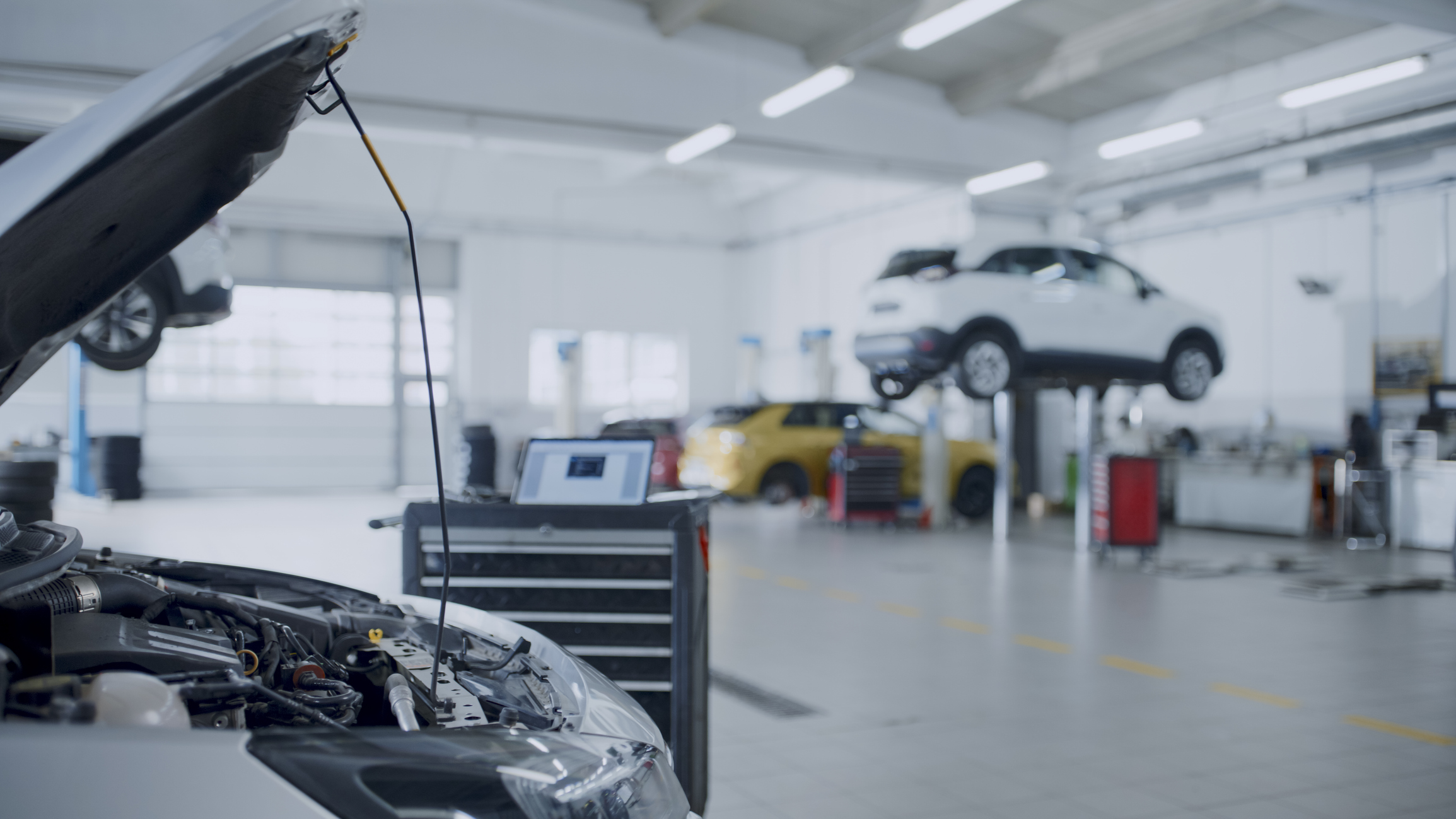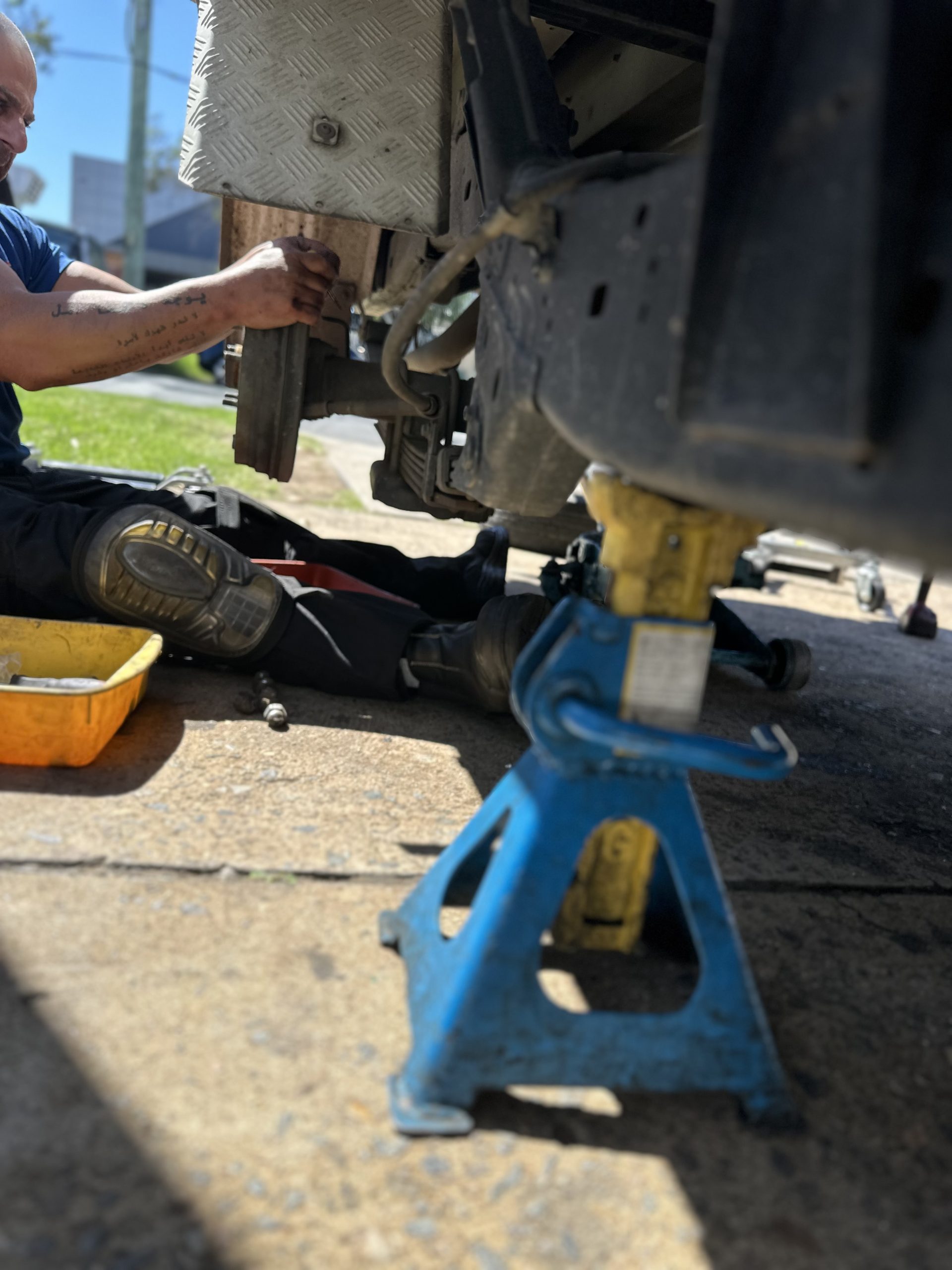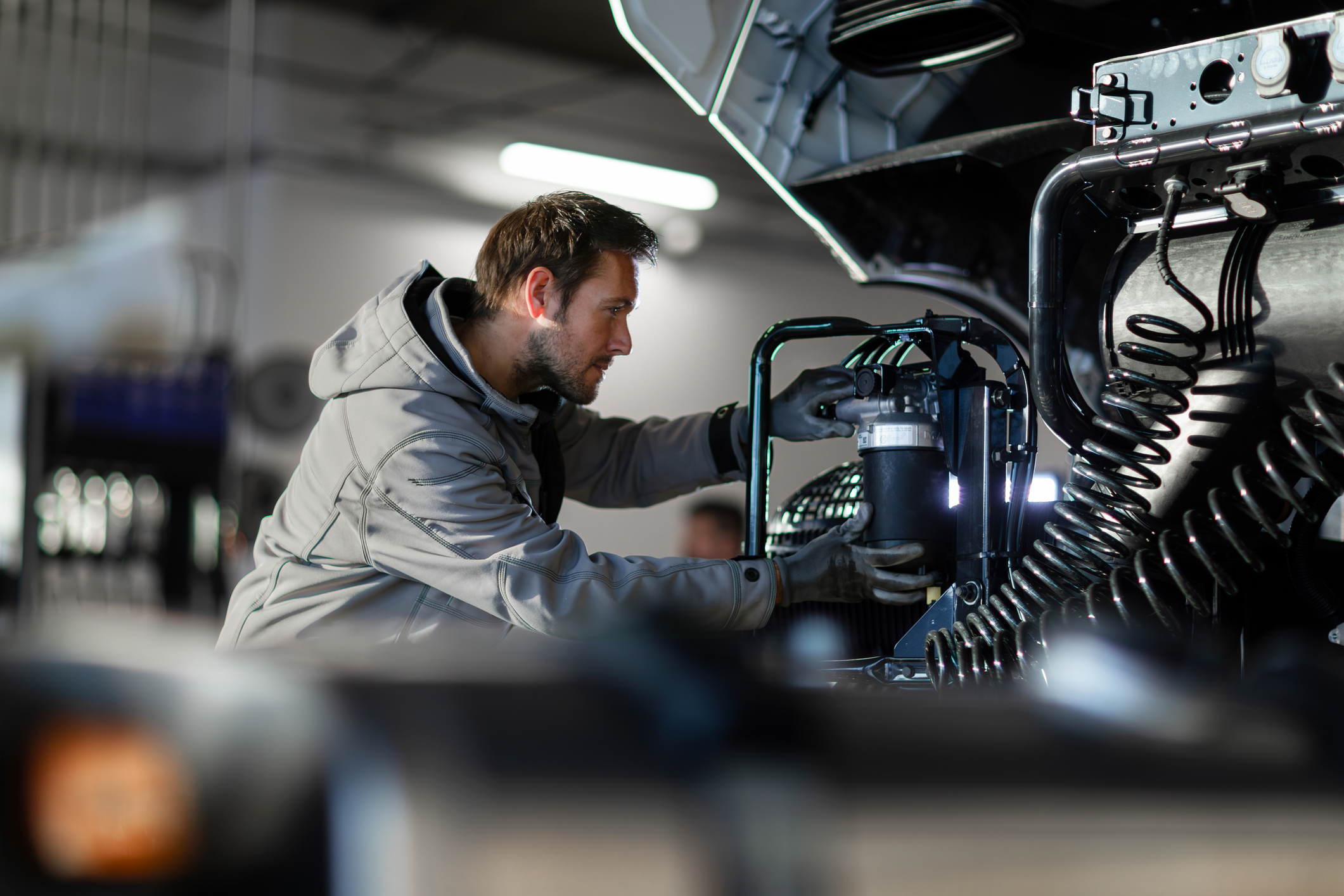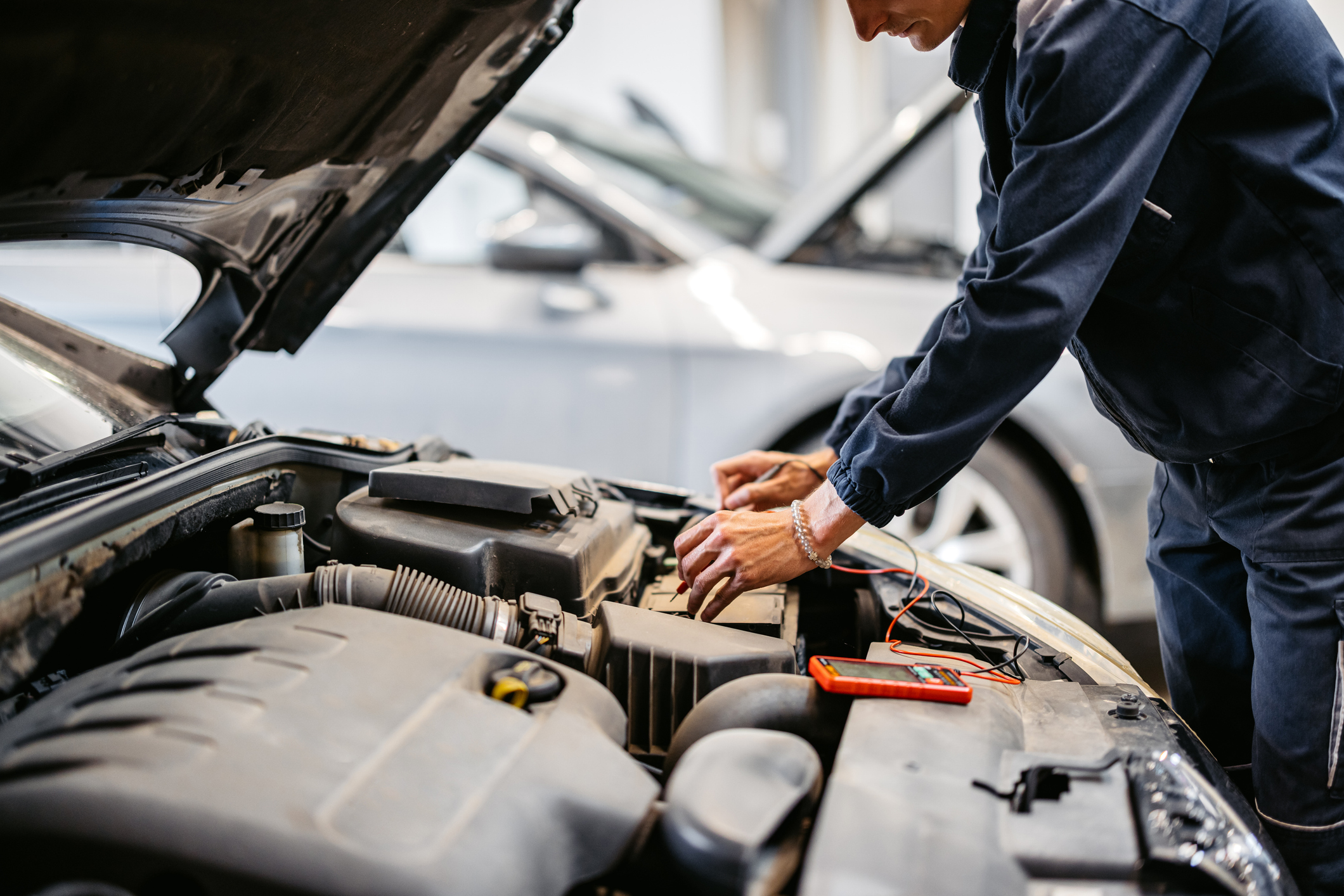
Book your service | Email: mga.repairs@gmail.com | Fax/Call us (02) 9708 4601
Book your service |
Email: mga.repairs@gmail.com |
Fax/Call us (02) 9708 4601
Blogs
Car Brake Repair vs. Replacement: When to Choose Which?

Car brakes are essential in terms of safety and performance. They make sure that your car stops when it is necessary. Yet what occurs when they begin to fail?
It may be difficult to know when to go in for a car brake repair or replacement. Both have advantages and disadvantages. The correct decision will save you money and make you safer.
Minor problems may be resolved by brake pad repair. But in case of serious issues, the replacement of the entire brake rotor is necessary. It is important to be aware of the symptoms of brake failure to make competent decisions.
The brake system should be maintained regularly. It assists in avoiding expensive repairs and makes your vehicle safe to drive. This guide will assist you in going through the maze of car brake services so that you make the right decision regarding your needs.
Understanding Your Car’s Brake System
The brake system of a car is complicated, and it contains several components that interact. All the parts are essential in safe driving. The familiarity of these parts assists in proper maintenance of the brake system.
The major components are brake pads, rotors, calipers and brake fluid. The rotors are pressed by the brake pads to cause friction, which slows the car. The pads are contained in calipers which cause them to move when brakes are applied. Brake fluid relays the pressure of the pedal to the calipers.
Unexpected failures can be avoided by regular inspection of these components. The brake system is well maintained, which increases component life and maximises performance. Knowing when parts need some care can help avoid serious problems.
The key work in car brake maintenance is:
- Checking the thickness of brake pads
- Rotor warp inspection
- Brake fluid monitoring
- Inspecting calipers to see whether they are worn out
Regular inspections are able to detect any possible issues before they become serious. Drivers can improve safety and minimise repair expenses by remaining aware and attentive.
Common Signs of Brake Failure
Brake failure can be detected early and therefore accidents can be avoided. Knowledge about these indicators assists in ensuring that the brake system of a vehicle is maintained in a good condition. By ignoring them, you can end up with expensive repairs or even dangerous situations.
A squealing sound when you press the brakes is one of the common signs. This is a sign of worn brake pads that should be attended to. When unattended, these pads may destroy other parts of the brakes.
A vibrating brake pedal is another indicator of a possible problem, and it can indicate warped rotors. Shuddering during braking is not normal and must be taken care of immediately.
A spongy or soft brake pedal is a sign of problems such as air in the brake lines or brake fluid leaks. This decreases the effectiveness of braking, making stopping distance longer and endangering safety.
Pay attention to warning lights on your dashboard, which may signal that your brake fluid is low or that you have a severe problem in your brake system. Take care of these alerts as soon as possible to avoid additional issues.
The following are the major indicators of brake failure to look out:
- Screeching or grinding sounds
- Bouncing brake pedal
- Spongy brake pedal
- Dashboard warning lights
- Lagging or sluggish brakes
Proactiveness towards these signs guarantees you safety on the road. Your brake system can be maintained in good shape through regular inspection and repairs.
Brake Pad Repair: What It Involves and When It’s Enough
Minor wear can be repaired by replacing the brake pads. It entails changing or resurfacing the pads, depending on their conditions. This eliminates the damage of rotors and other parts when timely action is taken.
In case your brake pads become thin, you may just replace them. Squealing noises are common indicators, and they are usually caused by wear indicators. Early intervention can ensure that the cost is low and performance is maintained.
In the case that the pads are not too damaged, resurfacing can also be used. The process makes the surface of the pads smooth and removes small grooves or glazing. Resurfacing will result in more uniform wear and greater contact with the rotors.
New brake pads are not required in all cases. In the case the pads do not show any severe wear other than the surface, repair can be done. This choice will be based on a professional evaluation and the actual state of the pads.
When:
- It has a little wear or glazing
- There is squealing noise available
- Replacement costs are prohibitive
- The thickness of pads remains sufficient
Knowing when repair is enough will guarantee safety and cost savings. To find out the best way to go about your brake pads, it is advisable to seek the services of a professional. Frequent inspections will help to avoid sudden problems and maintain your car in good condition.
Brake Rotor Replacement: When and Why It’s Necessary
When the damage is extensive, it is important to replace brake rotors. Rotors offer a smooth surface to press against by pads. Braking efficiency is lost when distorted or worn.
Vibrations during braking are some of the common indications of rotor problems. This is normally caused by uneven surfaces of the rotors which do not interact well with the brake pads. When not controlled, it may influence the control of vehicles.
Rotor replacement is unavoidable when they have surpassed the resurfacing stage. Resurfacing is ineffective when there are deep grooves, cracks or heavy rust. In this level, the only solution that can be used to guarantee safety and performance is replacement.
Rotors are worn out with time as a result of friction and heat. Such problems can be identified early by regular inspections and the damage and costs reduced. The failure to address may result in larger repair, increasing the risk and cost.
The main reasons to replace the rotors are:
- Buckling or extreme wear
- Rust or corrosion is heavy
- Rusty deposits
- Fissures or deep furrows
Car maintenance requires knowledge on the replacement of rotors. Immediate response does not only increase safety but also extends the total life of the brake system. Maintenance prevents sudden rotor problems, resulting in a constant level of safety and reliability of the vehicle.
Brake Replacement vs. Repair: Key Differences and Decision Factors
The choice of brake replacement or repair usually depends on the level of damage. Repairs are aimed at correcting certain problems in the brake system. This involves repairing or repainting components such as the brake pads.
Replacement, however, entails the exchange of the old parts with new ones. It is usually required when wear and tear cannot be repaired. Being aware of the condition of every part is critical in making a sound decision.
The correct decision can be made with the help of several factors:
- Severity of Damage: In case of minor damage repair may be enough.
- Prices: Repair work is normally less expensive in the short term.
- Life span: Replacement of parts tends to be more long-lasting than repairs.
The knowledge of particular signs can help you make a decision:
- Braking Vibration: Can indicate serious rotor problems that require replacement.
- Squeaking or Grinding: This is an indication of worn pads and they may need to be repaired or replaced.
- Spongy Brake Pedal: This is usually an indicator of fluid problems, and it does not require replacement.
Frequent check-ups of the brakes indicate the actual state of the braking system. This enables the making of safety and cost decisions. There are situations where a repair and a replacement may be necessary.
Finally, repair or replacement decisions should be based on short-term and long-term vehicle performance. A visit to a professional mechanic will make the brake system reliable and safe. Unexpected brake failures can be avoided by proper assessment and prompt action.
The Importance of Regular Brake System Maintenance
Maintenance of the brake system is important to the safety and performance of the vehicle. Failure to take care of brakes may result in severe accidents. It is not negotiable that your brakes are good to go.
Preventive maintenance involves regular checks that are used to identify small problems before they escalate into big problems. Wear can be detected at an early stage through inspections. This preventative measure will save you the expensive repairs in the future.
Important maintenance activities are:
- Inspecting Brake Pads: Watch thickness and wear.
- Checking Rotors: Check warping or damage.
- Replacing Brake Fluid: Maintains the system in a good condition.
- Investigating Calipers and Lines: Check that parts are working.
Routine check-ups do not just increase safety, but also prolong the life of the brake parts. Better control and responsiveness of the vehicle can be achieved through proper care. Fuel efficiency can also be enhanced by investing time in brake maintenance to eliminate drag caused by faulty parts.
Taking care of the brakes, you invest in safety and efficiency. Car brake maintenance is a component of car health, and regular car brake maintenance guarantees a good driving experience.
DIY vs. Professional Car Brake Service
The decision to either do or not to do car brake service is a consideration of a few things. DIY can be money-saving, yet it needs knowledge and tools. Improper repairs may cause hazardous consequences.
Professional car services provide competence and tranquility. Qualified mechanics are able to identify problems that would otherwise not be identified. Their experience will make them do the job right the first time.
When making a decision, consider the following:
- Level of knowledge: DIY involves knowledge of brake systems.
- Tools and Equipment: Repairs should be done with proper tools.
- Time and Effort: DIY repairs are time consuming.
- Warranty and Quality: In professional services, warranties are common.
The decision to use professional services can guarantee you safety and quality. They are also prepared to deal with complicated brake problems, which could be avoided in the future. In the meantime, DIY repairs are appropriate to individuals who have the expertise and desire to perform car repairs manually.
Cost Considerations: Repair vs. Replacement
The cost implications are important in making decisions on whether to repair or replace the brake. Repairs are usually cheaper at first. But this is not necessarily the most economical decision in the long term.
It may be costly to replace brakes. However, it will save on money through the prevention of frequent repair expenses. New parts can be invested in to improve performance and life.
Cost factors are:
- Damage Level: Serious problems can be replaced.
- Part Quality: The quality of parts can be improved, which can be more expensive.
- Labour Fees: Labour fees are a part of professional services.
- Future Maintenance: Take into consideration long-term savings due to replacements.
Repair is a short-term solution but replacement gives long-term peace. You need to consider the cost of the initial outlay against the possible savings in the future.
How to Extend the Life of Your Brakes
Maintaining your brakes to last longer involves taking care of them and driving with care. Regular repairs are essential. It minimises wear and possible problems before they turn out to be expensive.
A change in driving style can be a big difference. Soft braking and coasting will reduce wear on your brakes. This is a positive behavior particularly in high traffic conditions whereby there is a lot of braking.
Apply the following tips to improve the life of the brakes:
- Periodic Inspections: Brake pads and fluid levels should be checked regularly.
- Smooth Driving: Do not make abrupt stops and accelerations.
- Clean Components: Ensure that rotors and pads are clean.
- Monitor Fluid: Check that the brake fluid is clean and at the right level.
Such habits do not only increase the life of the brakes, but also make the road safe.
Conclusion: Making the Right Choice for Your Safety
Safety and maintenance are the priorities that guarantee the performance and reliability of your vehicle. It is important to know when to fix brakes or replace them. Take into consideration all the factors, wear, cost and safety implications.
With maintenance and professional advice that is consistent, you safeguard your vehicle and your peace of mind. Educated choices about the brake system of your car will help you avoid future problems. Make a better choice for a safer drive.
Share this article
Recent Blogs
- All Posts



